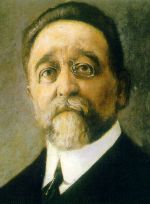

RUPERTO CHAPI Y LORENTE
27thMarch 1851 --- 25th March 1909
Last Updated on 2017
By Steven Ritchie
And now for the Music

Thanks to Ramon Pajares Box for the music below.
(772)"La Revoltosa (1897), Preludio". Sequenced by Ramon Pajares Box
(773)"La Bruja (zarzuela, 1887), Jota". Sequenced piece by Ramon Pajares Box

If you done any Classical pieces of say for example, Delius, mozart, and so on etc,
please email them to the classical music site with details to
"classical (@) ntlworld.com" written this way to stop spammers
just remove spaces and brackets for email address, thank you.

Visitors to this page --

Back to Classical Midi Main Menu click "HERE"